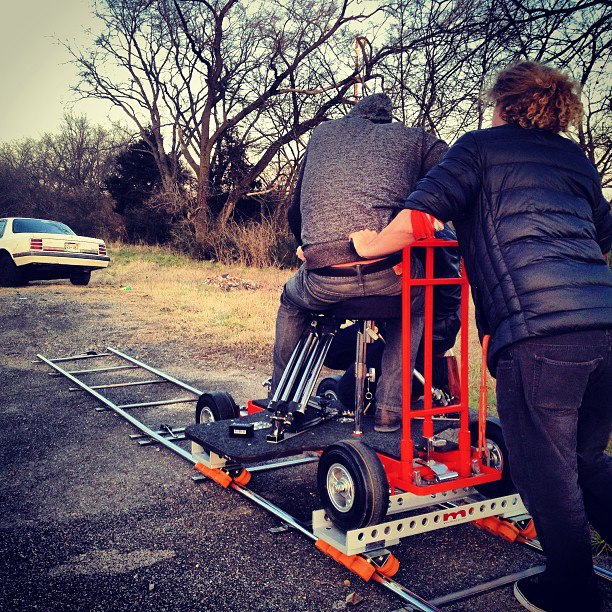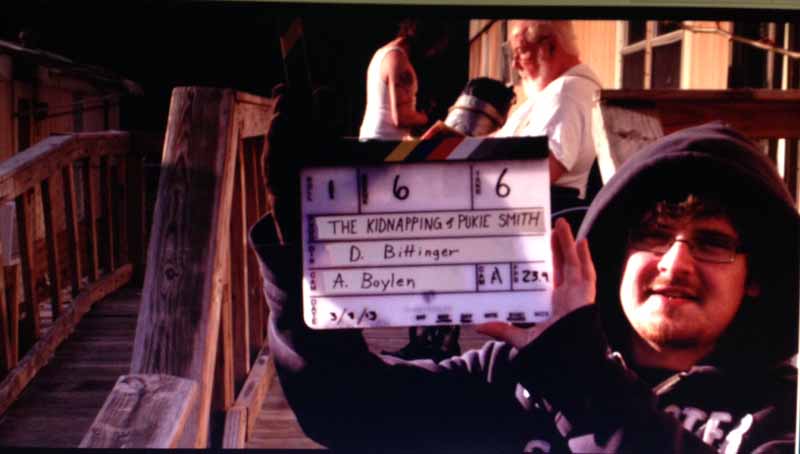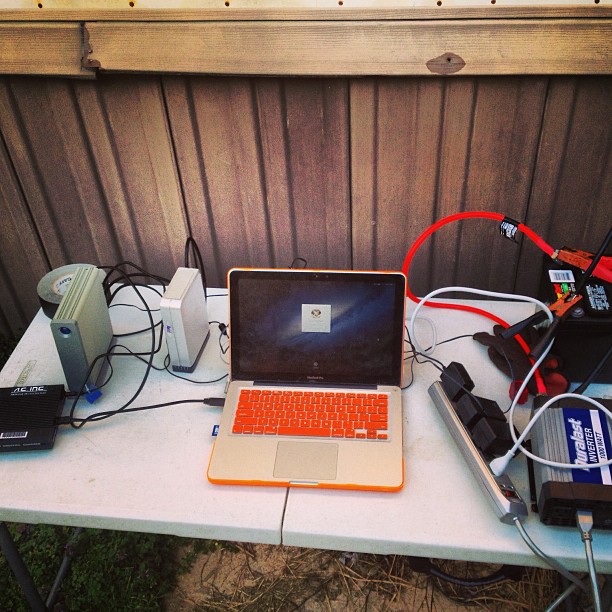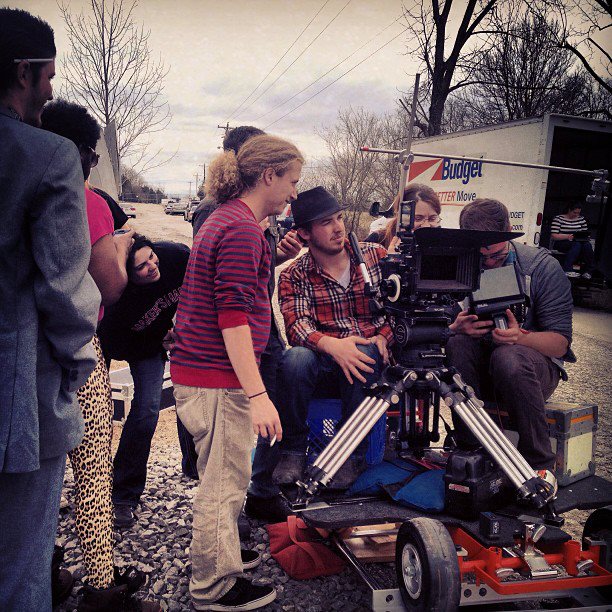Jeremy Hack: Working on a Large-Scale Film Set
A film set is considered by many to be a place of magic and mystery. Most people aren't aware of why certain decisions are made and why certain things happen. One of my purposes this week is to clear up misconceptions and explain the workflow on a set in the best ways I can based on my experience.
Film sets can be both a curse and a blessing in multiple ways, just as any other jobs or career choices. You know when you chose the wrong career, quickly. Film production is NOT for the weak-at-heart, or the weak in general. Even as a director you must be prepared to have a project that you have invested countless money, time, and passion into being crucified by a misinterpreting audience. Let's begin with some of the misconceptions.
One of the most common misconceptions about being on a set is that it is soft and non-manual. I will state from what is now professional experience that this is simply not the case. In fact, working on a film set is arguably one of the most labor-intensive and mentally challenging jobs I've seen. Having to carry an entire 16-foot box truck worth of heavy equipment cases through the forest to the shoot location isn't fun; it's just something you are willing to do for the better sake of the production. The audience will likely never know of your labor here, but deep down you know that it was necessary. All three days that I was present, we would get to the set before the sun rose, toting our heavy cases and ready to film, not returning for sleep until well after nightfall.
Another misconception about working on a set is that it is an artsy, laid back, "chill" environment full of sheltered people that are afraid to get dirty. Upon evaluating various hectic situations in my life, they all pale in comparison to the utter insanity and burning pace you must work at on a set. At any given time there are multiple things going on simultaneously. You may be on your way to get a neutral density filter for the camera and you meet an actress that is going to make a wardrobe change, shortly after you may have to step aside to let the grips through with their large, heavy equipment cases. As far as getting dirty, be prepared for it. During one of our shoot days, the director repeatedly threw himself to the ground to show the actors how to fall properly. His back was covered with dirt and crushed leaves. The grips on a set can be more brute and bare-knuckled than the people that work the most physically demanding jobs in the workforce.
The final misconception I will discuss is that it's a simple process. Film production is not a simple process. There are mounds upon mounds of red tape and legalities that must be addressed before you even arrange for equipment. At the production meeting prior to filming, I was confronted with a hard back, 3-ring binder that was stuffed to the brim with production notes, scheduling sheets, call sheets, releases, scripts, actor profiles, catering lists, and many, many more things.
Everything has a process, and this includes everything from the camera to where people are allowed to stand when the shot is being taken. You can't expect to just show up with a little handycam and a tripod, throw it in auto focus and record until you get the right shot. There are procedural measures that must be taken. Prep time for our cameras was around 30 minutes. Each time we arrived on a set the camera had to be assembled, then stripped back to the body when we wrapped. You cant just throw it all in your back seat and go, everything must be checked and accounted for before wrapping a set. Next I will discuss some of the processes that I specifically dealt with as the second AC Grip and DIT on the set.
Slating:
I'm sure you have seen the behind the scenes reel in some motion pictures where the guy has the little black and white thing with the swinging top and the numbers on it that he slaps before action is called. That black and white thing is called a slate. and the guy that is using it is doing a job called slating. Slating is a very important process to the production. Having a slate in front of the camera when the camera starts rolling allows the editor to see precisely what scene and take is about to happen based on the thumbnail of the video clip. This isn't the only purpose of slating though.
Slating is also vital in audio synchronization. Some people know this and others don't, so I'll tell you. On movie sets, all audio is recorded entirely separate from the video. They are two different entities, recorded on two different memory cards, with two different sets of folders in editing. So you wonder why the slate must be snapped? Here's your answer: Because audio and video are recorded independently, you must have a way to identify specific scenes and takes for both audio and video. the "smacking" of the slate is necessary for lining up the audio with the video so the actors words match their mouths. The editor will import the audio file and the video file into the software, look for the spiked waveform in the audio, find the moment in the video where the slate has just shut, and line them up. This guarantees that all audio will be aligned for that scene.
The process of basic slating is relatively simple; but there are some additional terms that I dealt with that I had to quickly learn in addition. I will cover those shortly. In basic slating you simply mark the slate with the scene and take. When the Assistant director calls quiet on the set, you move in front of the camera, and wait for the operator to say "Camera speeding." at that point you name the scene and take, followed by the word "mark" then close the slate for audio. Then you get out of the shot as fast as possible. You must do this for every take in every shot
As I said, there are some additional terms and processes in slating. Please be aware that I make no claim to know everything about slating; I am only sharing the tidbits of information that I learned in my 3 days on set. One less familiar term in slating is called "Second Sticks". Second sticks are used when the slate operator makes a mistake or moves the slate too much during the process. Second sticks are necessary because the editor is unable to clearly see when the sticks collide, therefore he or she cannot efficiently line up the audio with the video. Another term in slating is called "Tail Slating." This is used when the start point of the camera does not allow the shot to be slated at the beginning, or when its not efficient to alter the focus of the shot until the end. In tail slating the slate is held upside down at the end of the shot. The reason for holding the slate upside down in tail slating is simple; it signifies that that particular slate is at the end of a shot.
DIT:
One of my primary jobs on the set was the DIT, or Digital Imaging Technician. DIT is arguably one of the most vital jobs on set, because one slip up by the DIT and you've lost an entire day worth of footage. The DIT must be organized, meticulous, and detail-oriented. The DIT is responsible for receiving the memory cards from the cameras and audio devices and storing it all on a redundant hard drive so that the cameras memory card can be formatted (erased) and used to capture more footage. So if I had thought I backed up a card but forgot to, and brought the card back to the camera department without backing it up, they would have formatted it and the footage would have been lost forever. Fortunately we didn't encounter any problems.
I do DIT-style work on a daily basis with Beech Tree News when pulling files off my cameras and backing them up before formatting my cards. So the same principal applies; if I take 600 photos at a ball game and don't back them up, then next time I need space on my card and I format it, I lose 600 photos forever. DIT is very important.
The director has a very specific folder structure that DIT must honor. In my case (and it could be universal) it was Root Folder<Video<Day Number<Card Number. Any misplacement of a folder could lead to hours of searching for a video file.
2nd AC Grip:
Having said all things so far, that leaves little to be discussed in the avenue of being a Second AC grip. The second AC (Assistant Camera) is responsible for retrieving lenses, batteries, ND (Neutral Density) filters, miscellaneous camera accessories, and generally anything else that keeps the camera rolling. Being that I was also DIT means that when batteries died, sometimes I would take it all to my car and plug them in to an inverter on my battery to charge them. Without power, you are stranded.
In conclusion, to me a film set is great place to feel needed and be creatively stimulated. It gives you a scope on how much effort is executed in the productions you see on television and in theaters. People eat, breathe, and sleep this lifestyle and love it every day. I'm very thankful and proud to have played a part in a large-scale production. Take the time to watch the credit reel on movies and TV shows, because all of those people busted their chops to earn that line of text and help make it happen.
- Log in to post comments
































